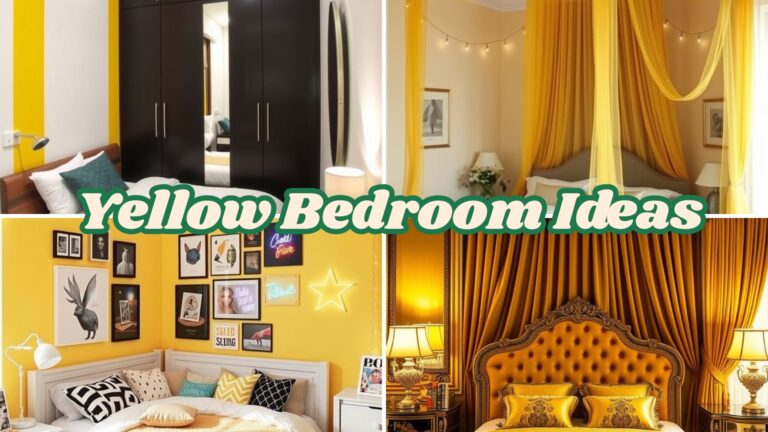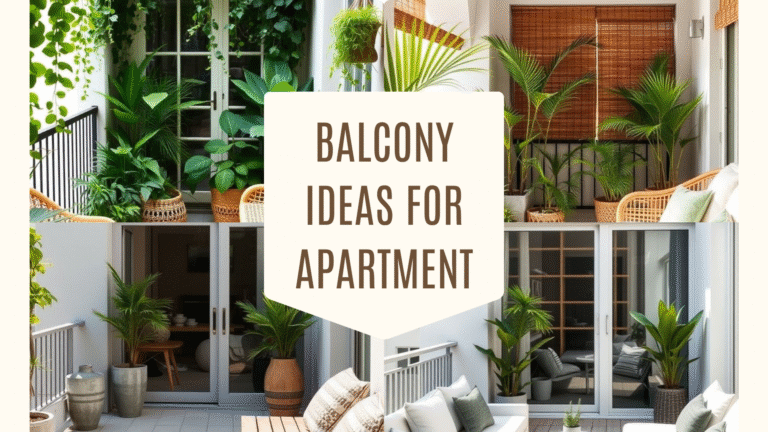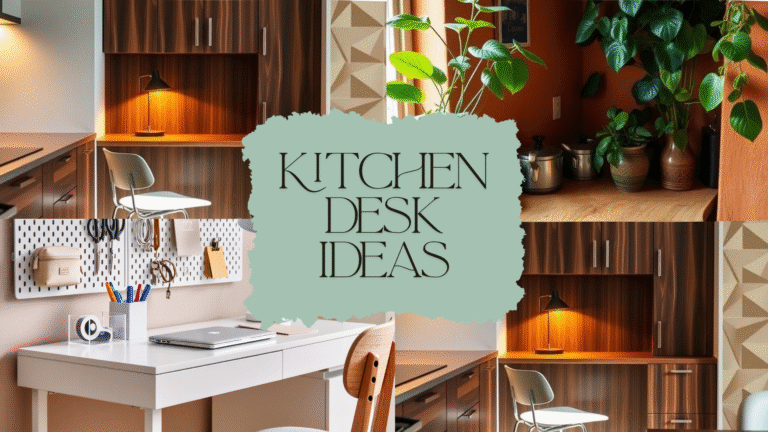Contemporary Living Room Ideas for a Stylish Home (2025)
Creating a space where you feel truly at ease is no small feat. Over the years, I’ve stepped into hundreds of living rooms—from quaint city apartments to sprawling modern homes—and each one had a story to tell. This article gathers 20 living room designs that caught my eye and held my attention, not just because they’re beautiful, but because they offer something functional, comforting, or downright clever.
You’ll see living rooms that mimic art galleries, embrace nature, push futuristic boundaries, or simply invite you to slow down. Every section below is based on an image and my impression of it, told through what I noticed, imagined, and felt standing there. Whether you’re refreshing your own space or helping someone else plan theirs, you’ll find useful inspiration—and maybe even a few unexpected ideas.
Art Gallery Vibe
I walked into this living room and immediately thought I’d entered a private art exhibit. The walls were clean and spacious, painted in soft matte white that made each piece of framed art leap out. The furniture didn’t demand attention—it offered support to the artwork instead. Minimalist chairs with sculptural lines, a low-profile couch, and a marble plinth coffee table pulled it all together like a curated set.
The lighting was key. Track lights above highlighted each frame, creating gentle shadows and depth across the room. It didn’t feel staged—it felt intentional. Even the placement of books and ceramics on the shelves mirrored a museum’s quiet restraint. I imagined sipping a warm coffee here on a rainy morning, flipping through an art magazine, feeling like I was part of the creative world.
Everything felt carefully thought out but not stiff. This wasn’t about showcasing wealth—it was about showcasing taste. The entire room whispered: “Here, art lives.”
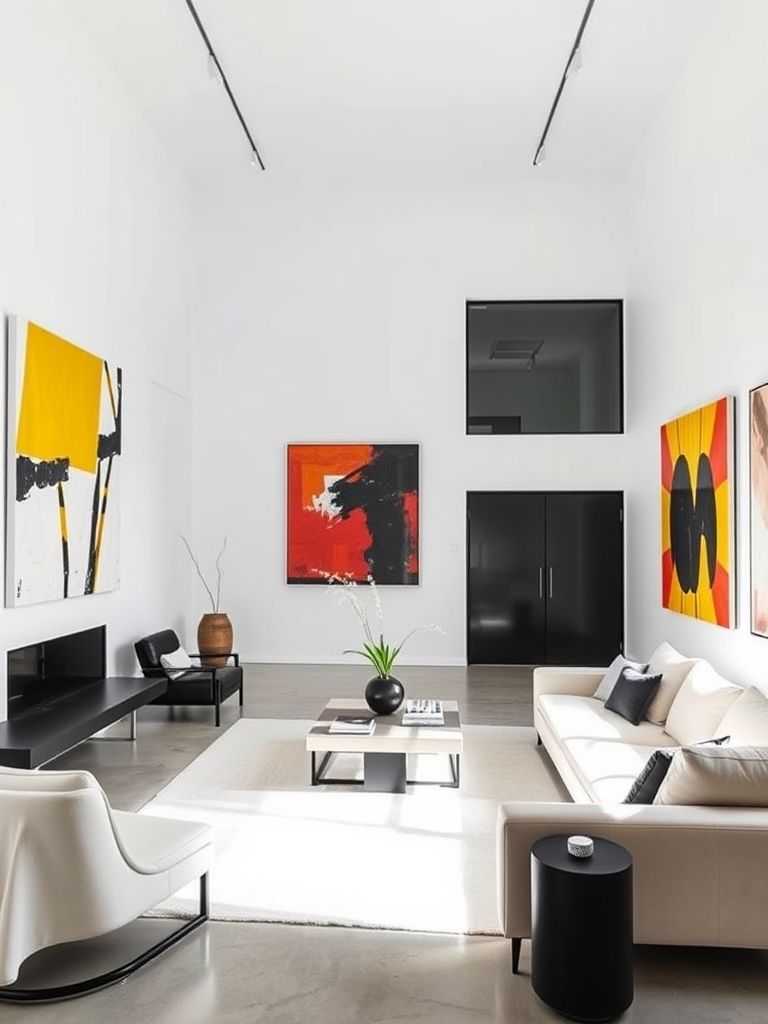
Biophilic Zen Space
This room made me breathe easier the moment I stepped in. There was a soft hush in the air, like nature had taken over but in a gentle, peaceful way. Plants of every size—hanging, standing, draping—brought in shades of green that paired beautifully with the sandy-toned walls and light oak flooring.
Large windows flooded the space with natural light, and bamboo shades filtered it into warm golden patterns. A tatami-style rug grounded the seating area, while floor cushions and a low tea table invited quiet moments. I remember thinking, “This is where you’d journal or meditate after a long day.”
The textures were layered but subtle: rattan, linen, smooth stone, and unvarnished wood. Even the artwork leaned into earthy themes—ink sketches of trees and streams framed with raw-edge wood. This living room wasn’t just decorated; it was designed for healing.
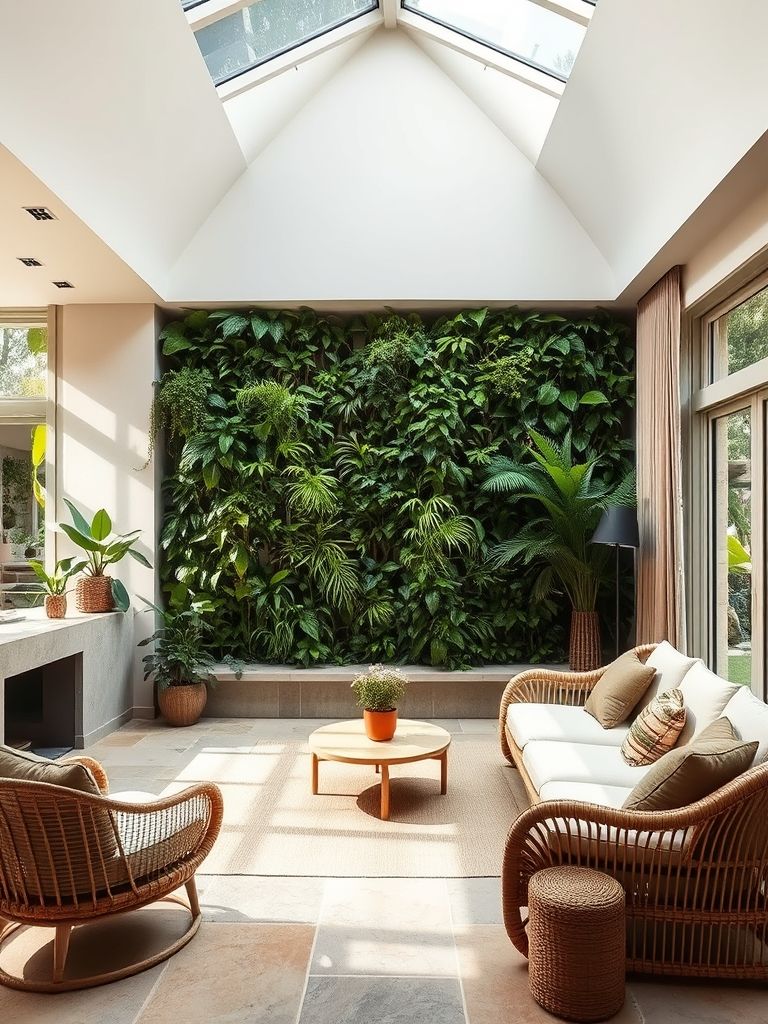
Bold Stone Centerpiece
Now this was bold. A monolithic stone slab stood at the center of the room, doubling as a coffee table and conversation piece. Its deep grey veins rippled across the surface like natural graffiti, and it instantly became the gravitational force of the space.
The surrounding furniture kept things simple to let the stone take the spotlight. A low-slung leather sectional in a warm tan curved around it, while soft charcoal drapes framed the windows. I found myself tracing the lines in the stone with my eyes like it was a map.
Above it hung a single pendant light—oversized and matte black—casting a direct glow that gave the stone an almost theatrical presence. This room didn’t just play with contrast; it owned it. The rawness of the centerpiece added a weight, literally and visually, that grounded the modern layout around it.
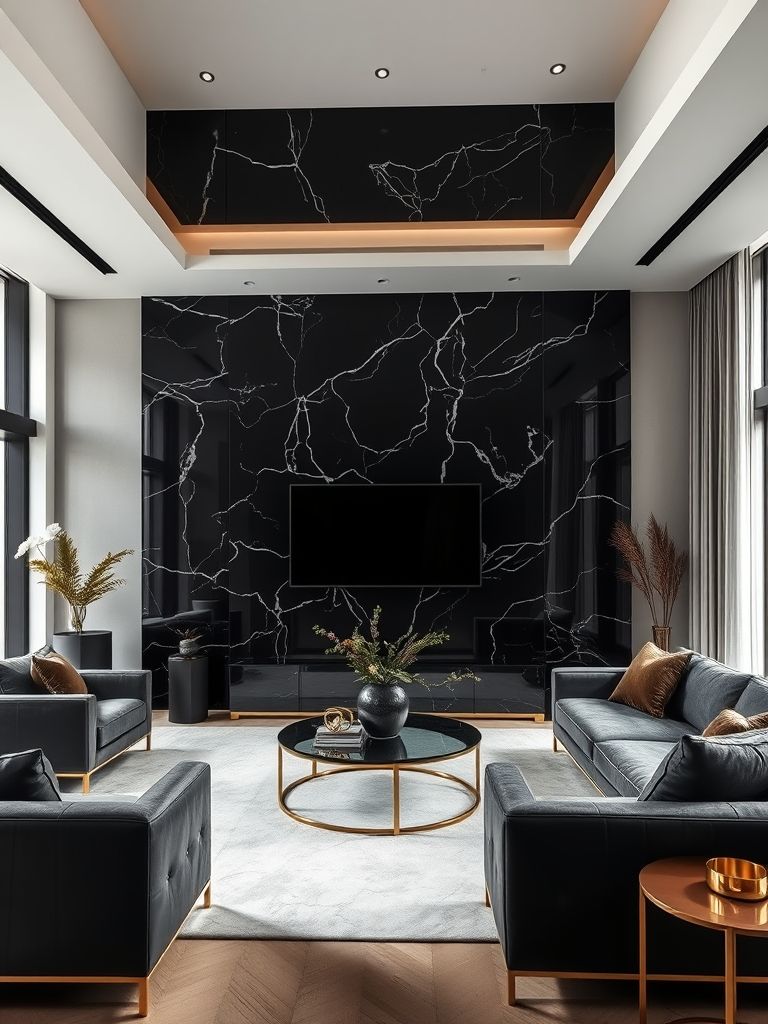
Coastal Contemporary Flow
Walking into this room felt like walking into an ocean breeze. There were no seashell motifs or blue anchors—just fluid forms, soft hues, and that unmistakable lightness you feel near the shore.
The palette blended soft whites, sandy beige, and weathered greys. A pale blue accent chair echoed the color of distant waves. The floors were white oak, sun-bleached and wide-planked, while sheer curtains danced in the wind through oversized sliding doors that opened to a coastal deck.
What stood out to me most was the effortless flow. There were no hard visual breaks—furniture lines were curved, rugs melted into floors, and even the shelving seemed to drift along the walls. Light bounced off glossy ceramics and mirrored surfaces, making the space feel even more expansive.
This is the kind of room that doesn’t try to impress—it just makes you feel like you belong there, barefoot and content.
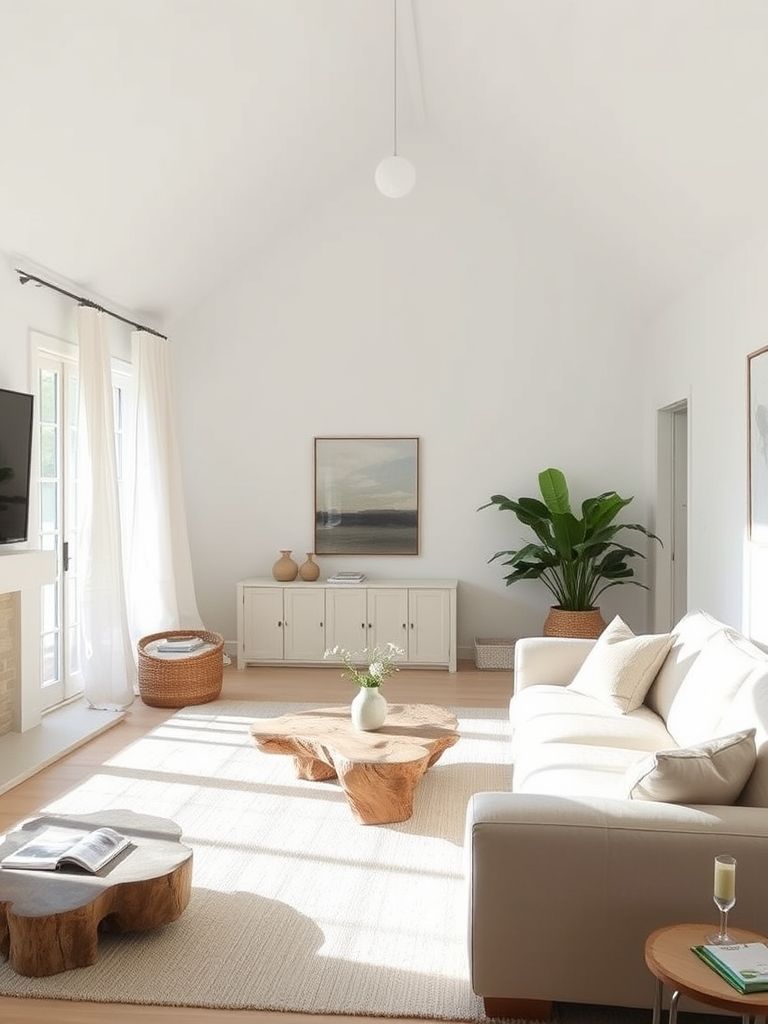
Dark Modern Opulence
As I stepped into this room, everything felt luxurious—but not loud. The palette was dark: charcoal walls, deep walnut floors, black velvet drapes. Yet instead of feeling heavy, the space radiated calm power.
Lighting played the hero here. Recessed ceiling lights, golden sconces, and a statement chandelier dripping with smoked glass gave the room a soft glow. Gold accents were scattered just enough—on a mirror frame, lamp base, and a marble side table with brushed brass legs.
The furniture was sculptural and rich: a midnight blue velvet sofa with sharp edges, paired with leather sling chairs and a black marble fireplace. There were no bright colors, no clutter—just texture and shape. I remember running my hand along the suede back of the couch and thinking how everything here invited you to stay, just a little longer.
It was modern, yes—but it didn’t chase trends. It curated its own sense of drama.
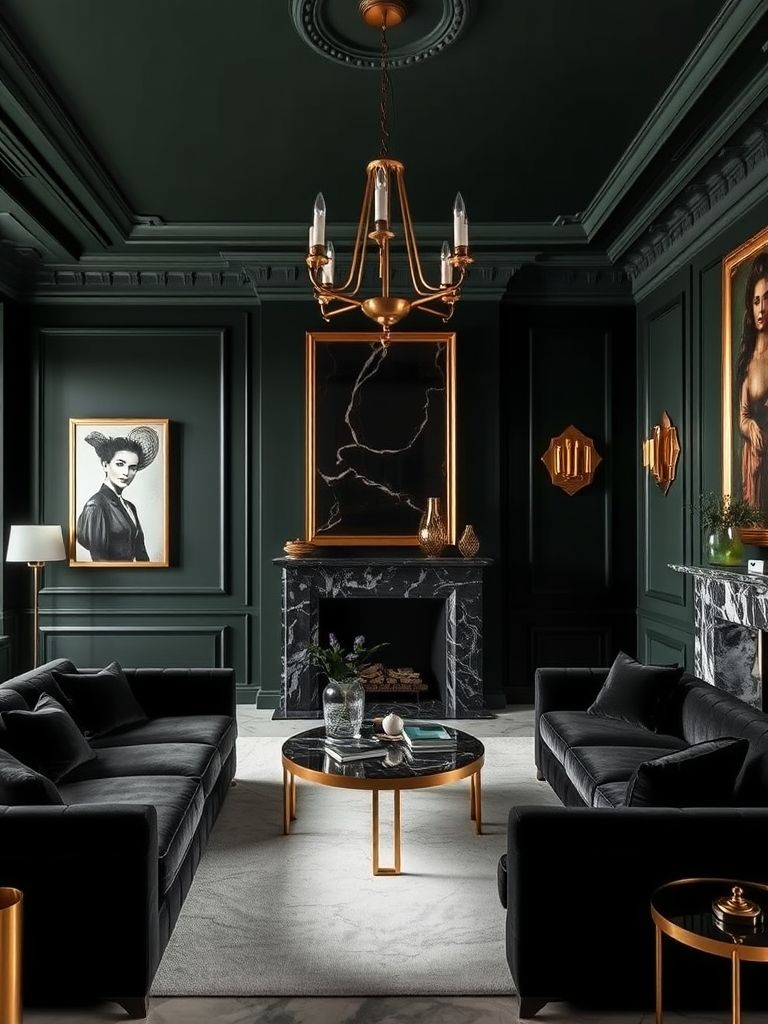
Desert Modern Living
I stepped into this room and instantly felt the warmth of the desert—even without the sun. The color palette was pulled straight from a canyon: dusty terracotta, golden sand, and muted clay. The walls carried a sun-baked finish, almost like adobe, giving the space a cozy, earth-rooted charm.
Low-slung furniture in pale browns and creams made everything feel relaxed, while woven textures in the rugs and pillows nodded to desert craftsmanship. Cactus arrangements and dried botanicals added life without overwhelming the minimal setup.
The architecture was simple, with exposed ceiling beams and large square windows that framed the sky like living art. Every corner whispered restraint, and that quietness made the space feel peaceful. I imagined sipping chilled water here after a warm walk outside, letting the cool stone floors draw the heat from my feet.
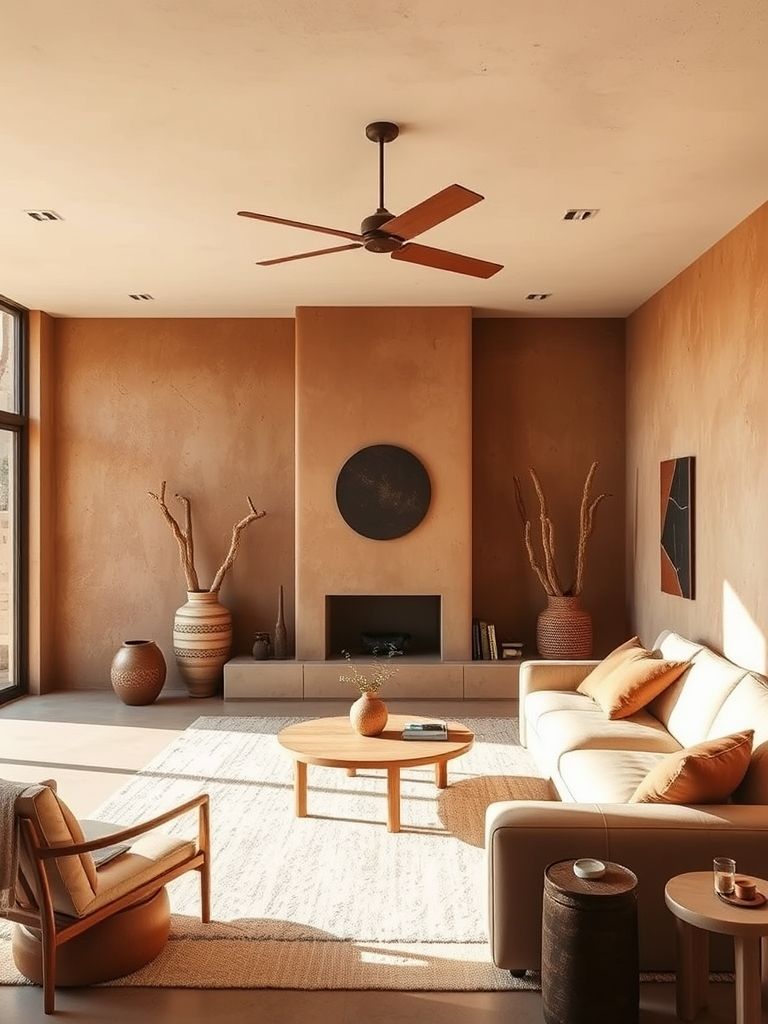
Floating Media Wall Concept
This design immediately struck me as sleek and clever. A media wall appeared to float—no clunky stands, no bulky cabinetry—just a seamless slab mounted against a soft-lit backdrop. Below it, a slim shelf ran the length of the wall, holding a few carefully chosen décor pieces and hidden wiring.
The wall color was a smoky taupe, which added depth, and LED strip lighting around the panel made the setup feel futuristic yet cozy. I appreciated how the lighting didn’t scream for attention—it simply made the entire wall glow, especially in the evening.
The rest of the room was designed to support the wall’s statement. A modular sofa faced it directly, while sound-absorbing panels and minimal speakers kept things acoustically and visually clean. If you love tech but hate the mess, this is the living room dream.
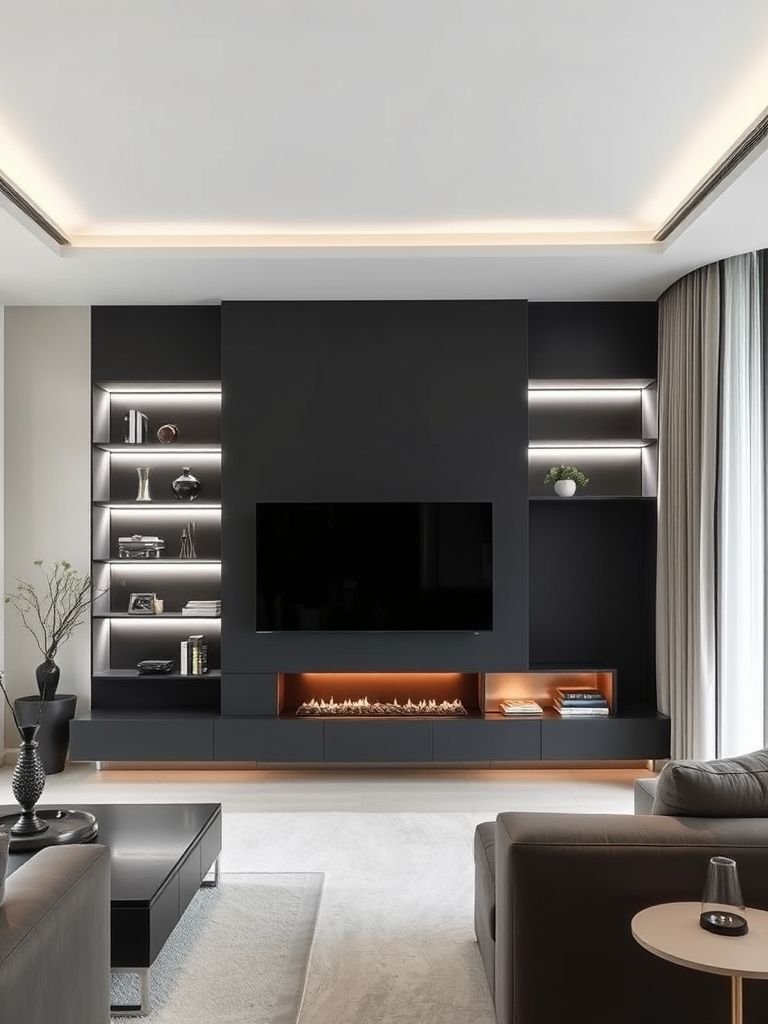
Frameless Open Living
There were no barriers here—visually or physically. The space flowed freely from the kitchen to the dining area to the living room, all without walls or doorways. Yet somehow, it didn’t feel chaotic. It felt intentional and breathable.
Neutral tones ruled the space: light oak floors, off-white walls, and linen drapes. Each area was defined by subtle design cues—a change in rug texture, the angle of furniture, or the position of ceiling lights.
What impressed me most was the total absence of visual noise. Even the storage was tucked away behind seamless cabinetry. I could see this layout working perfectly for gatherings—moving from the stove to the dining table to the lounge without bumping into walls or interrupting conversations.
It wasn’t just open—it was frameless in both structure and mood.
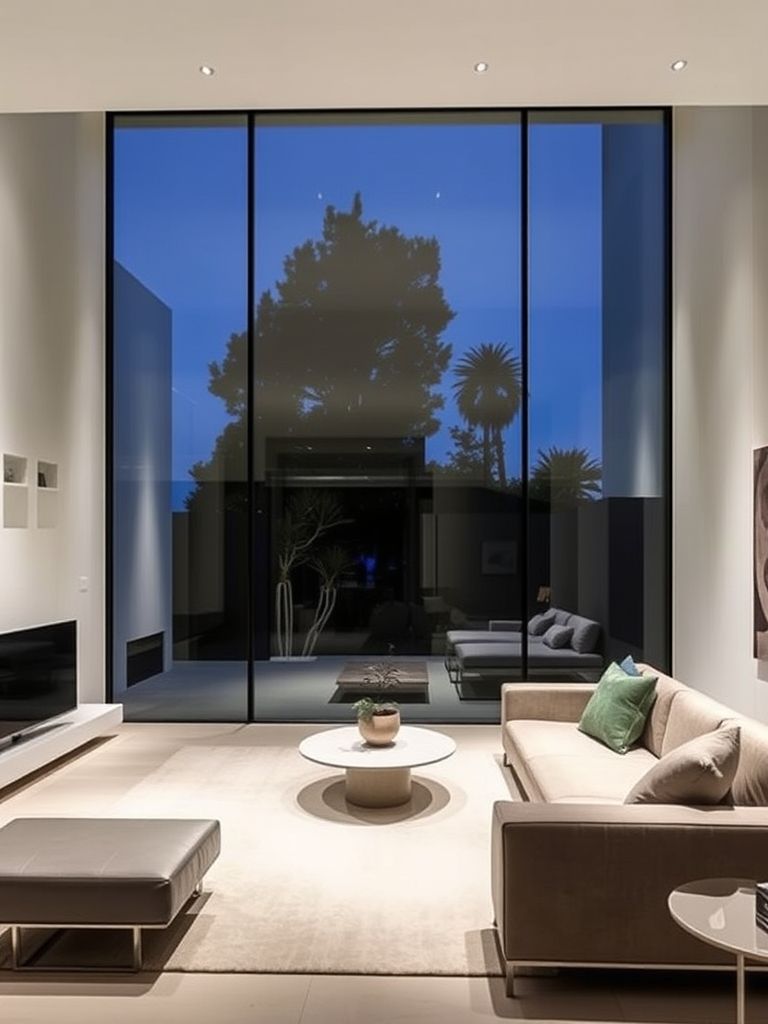
Futuristic Lounge Pod
This room felt like it belonged on a spaceship—but one that prioritized comfort over cold design. The layout was circular, and everything echoed that shape. A rounded modular sofa hugged a central ottoman that doubled as a glowing surface—yes, it lit up from within.
Walls were dark but smooth, like graphite or brushed aluminum. Smart lighting adjusted with a whisper, casting cool blue or soft white depending on the setting. A curved panoramic screen seamlessly blended into the wall, making entertainment immersive without dominating the room.
What surprised me was how human it felt. There were cozy throws, tactile surfaces, and small touches like a herb-scented diffuser that made the futuristic setting feel inviting. I remember thinking, “If AI designed a lounge for downtime, it would probably look like this—and I wouldn’t mind one bit.”
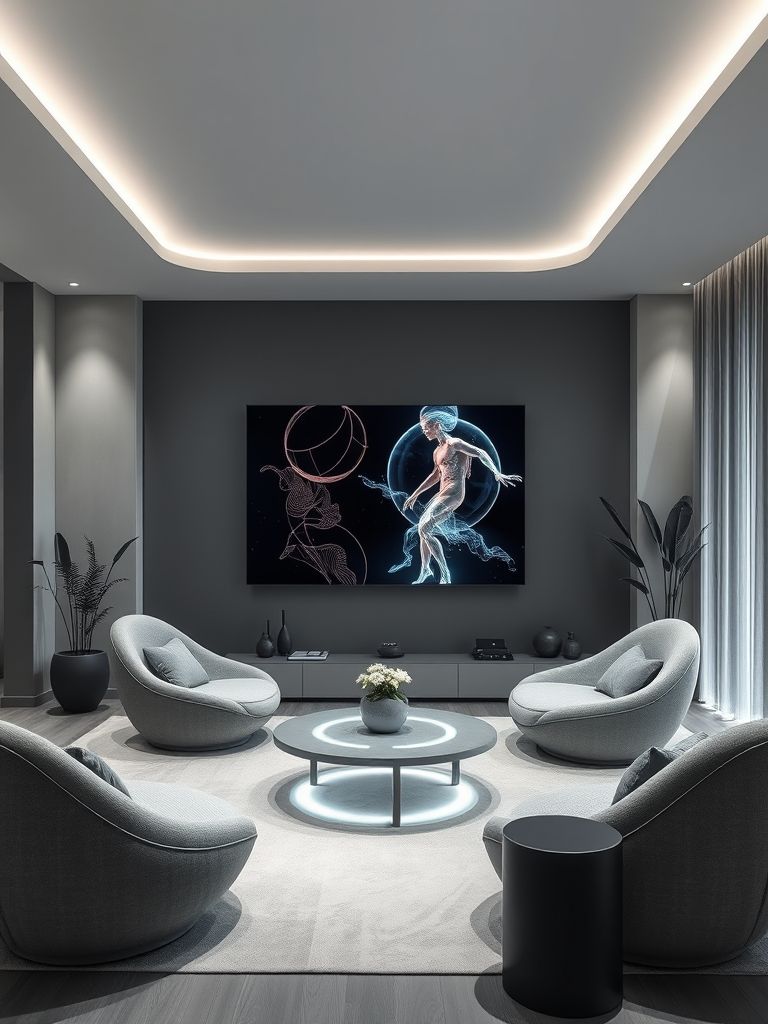
Mid-Tone Wood Modernity
This space embraced wood in a way that felt balanced—not too rustic, not too polished. The mid-tone wood grain covered the floors, cabinetry, and even a statement ceiling beam that gave the room a grounded character.
Furniture leaned mid-century: tapered legs, organic shapes, soft edges. But nothing felt too vintage or themed. The lighting came from warm globe pendants and a geometric floor lamp that cast gentle arcs across the walls.
I noticed how the wood’s natural warmth brought everything together. Even with metal fixtures and ceramic accents, the tone of the room stayed consistent and calm. I could imagine this as a forever room—the kind that never feels out of date because it never tried to chase trends in the first place.
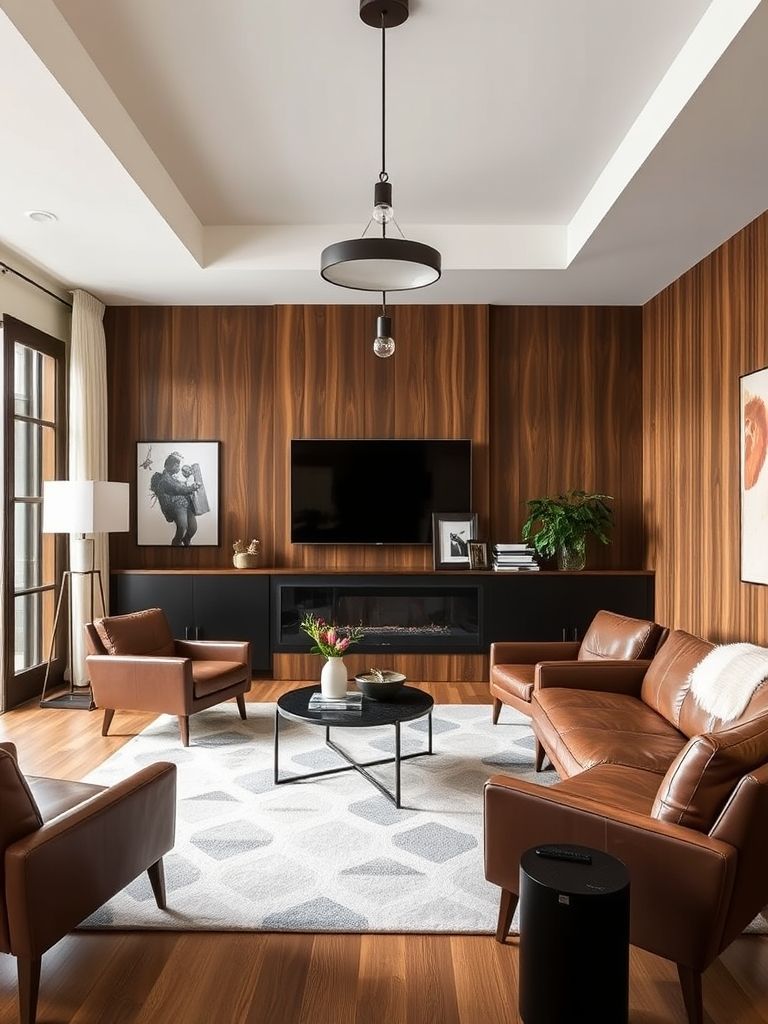
Monochrome with a Pop
I stepped into this room expecting the usual monochrome elegance—but then I saw it: a single, sharp burst of color that changed everything. The room was wrapped in shades of black, white, and greys. Sleek white walls, a charcoal sectional, and matte black shelves gave it that timeless, modern calm.
But right in the middle sat a lemon-yellow lounge chair. It didn’t shout—it declared. Suddenly, the room felt alive. That one piece drew your attention like a magnet, and everything else supported its energy.
This approach felt clever. It kept things sophisticated yet avoided looking sterile. The monochrome gave structure, while the pop brought joy. I remember thinking how easy it would be to update the whole room by swapping just one item. It’s proof that bold doesn’t have to mean busy.
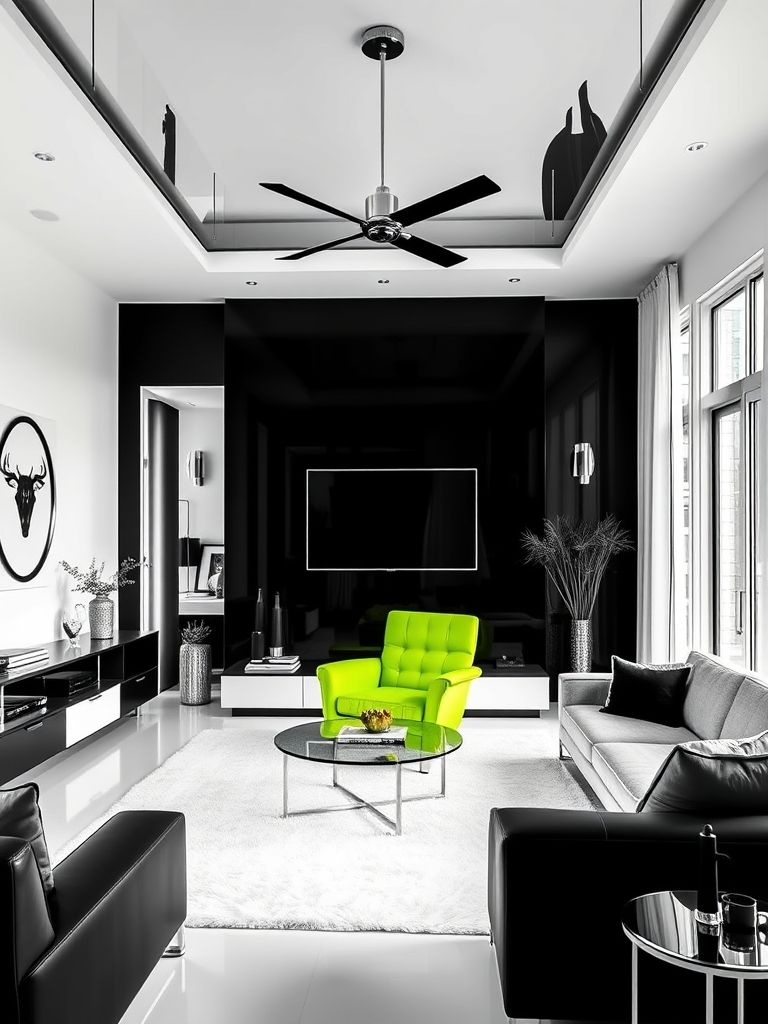
Neutral Layers of Luxury
Everything about this room whispered softness. Creams, beiges, and pale greys overlapped in gentle layers—from the oversized rug to the boucle sofa, from the slubby linen curtains to the marble-topped coffee table. It was luxury, but a quiet, comforting kind.
There were no hard edges. Every surface either had a texture or a curve, making the space feel like a warm embrace. Even the artwork on the walls followed the theme—abstract forms in sand tones and brushed gold frames.
Lighting came from natural sources and diffused lamps that cast a warm glow across every corner. This wasn’t the type of room you’d worry about messing up. It welcomed barefoot walks, soft throws, and casual tea moments. It felt like a sanctuary carved out of calm.
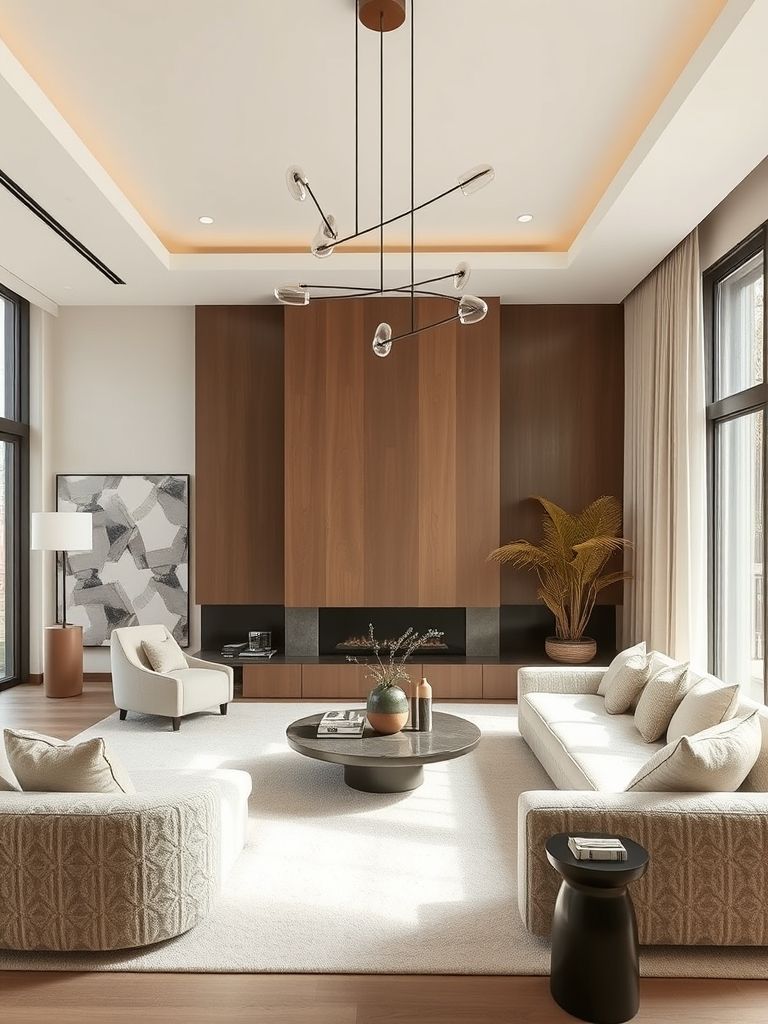
Open Plan Harmony
This layout sang a quiet tune of togetherness. No walls stood between the living, dining, and kitchen zones, yet each area felt distinct and intentional. It was open-plan done right.
The visual flow was seamless. The kitchen’s wood tones echoed in the coffee table. The dining pendant matched the living room’s wall sconces. A consistent palette of muted neutrals and natural textures tied everything together—like different verses of the same song.
I loved how the space encouraged connection. You could cook, chat, relax, and work without missing a beat. I imagined Sunday brunches, movie nights, and family game days all unfolding easily within the same uninterrupted space.
It was modern life made visible—open, shared, and beautifully balanced.
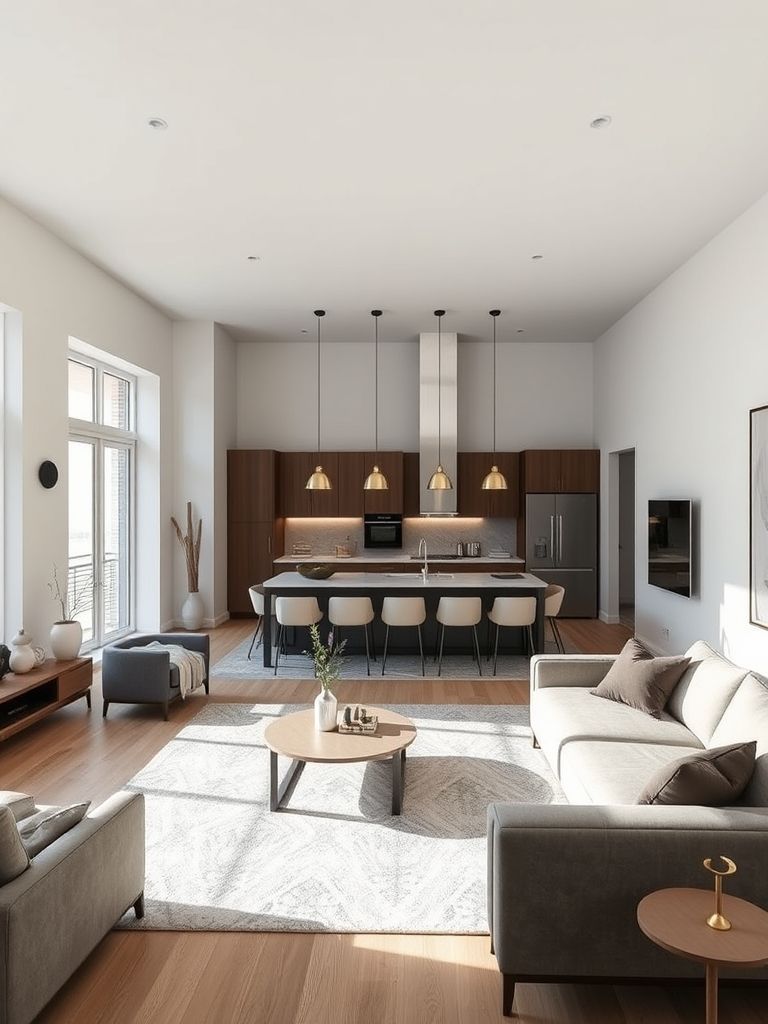
Pastel Soft Modern
This room looked like springtime in interior form. Soft blush, powder blue, mint, and lavender came together without overwhelming the eye. Each hue was just a whisper, layered on neutral backdrops that kept the overall look clean.
The furniture followed suit—smooth, rounded, and low to the ground. I noticed a curved loveseat in pale pink velvet, paired with a mint glass coffee table that caught the light just right. Subtle gold detailing on lamps and mirror edges added just enough shimmer to lift the vibe.
Pastel rooms can easily lean childish, but this one didn’t. It was grown-up and graceful, with everything placed just so. I could see it as a gentle space for reading, lounging, or even a creative session. It felt like a daydream that somehow came true in living room form.
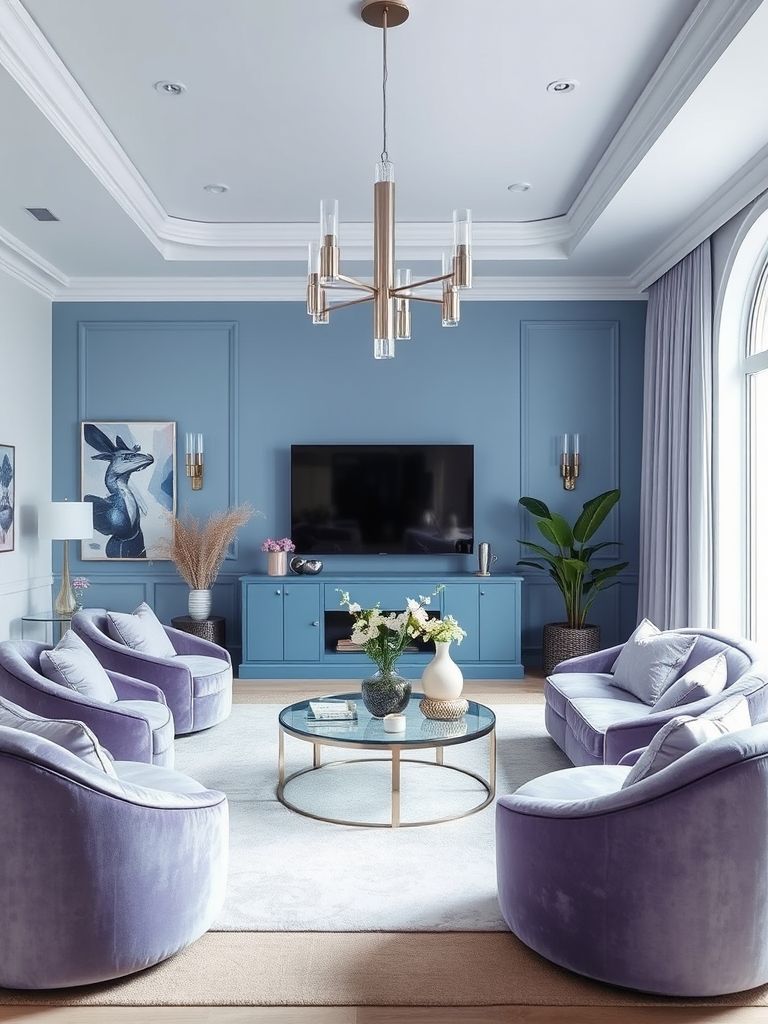
Smart Living Space
Every detail here felt intentional—and quietly intelligent. This wasn’t a tech show-off room; it was a space that simply worked better because of the tech you didn’t see. Hidden speakers, automated blinds, and ambient lighting responded to your mood or time of day.
The furniture was modular and moveable. A central ottoman transformed into a desk platform with the press of a button. Shelving units retracted into the wall when not in use, and an embedded screen slid up from a cabinet when needed.
I admired how the design didn’t scream “futuristic.” It simply improved life behind the scenes. Warm wood tones, pale upholstery, and greenery softened the space, keeping it cozy despite its high-tech core. This was the kind of living room I could live in—quietly smart, comfortably human.
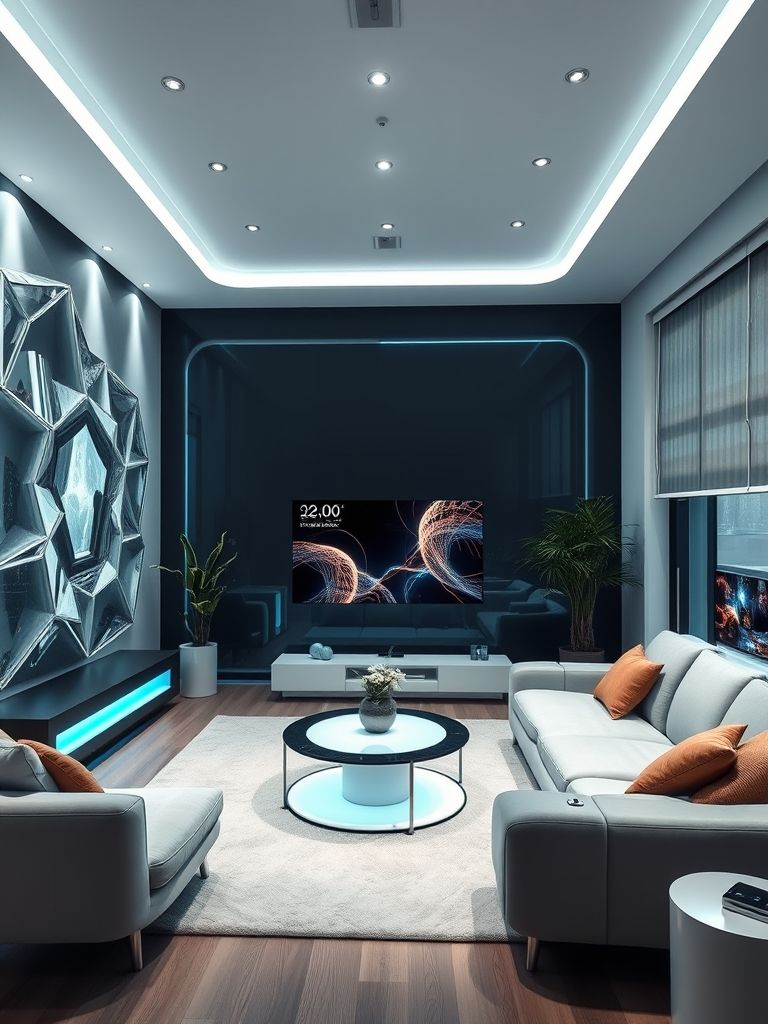
Soft Curves & Sculptural Forms
The first thing I noticed in this room was the absence of corners. Everything flowed. Sofas curved like riverbanks, coffee tables resembled pebbles, and even the lighting fixtures hung in swooping loops. It felt like walking into a sculpture gallery where comfort took the lead.
The walls were kept plain—light ivory or soft beige—letting the shapes do all the talking. A floor lamp in a spiral brass design stood like art, and the ceiling featured a subtle dome with hidden lighting that added to the room’s roundness.
I found myself instinctively relaxing, as though the space itself encouraged softness in posture and tone. It was soothing in a way I didn’t expect. These curved forms created a sense of ease—like the room wanted to cradle its guests instead of just host them.
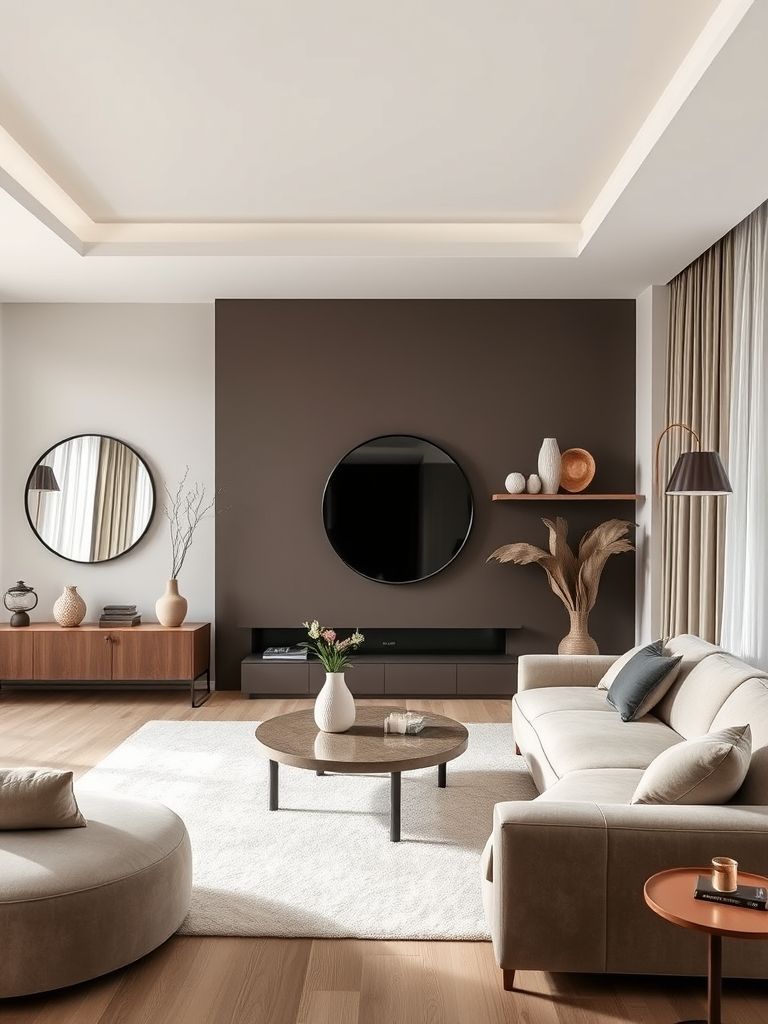
Sustainable Chic
This room had a conscience. Every material, every piece of furniture, seemed chosen for both style and sustainability. The wood came from reclaimed sources—visible through knots and grains that told stories of their past lives. Textiles were clearly natural—organic cottons, recycled wool throws, jute rugs.
Even the color palette spoke to the earth: moss greens, clay reds, soft stone greys. Light filtered through bamboo blinds, and indoor plants thrived in biodegradable planters. I read a tag on the coffee table that mentioned its carbon-neutral production. That stuck with me.
And yet, nothing felt compromised. This wasn’t a room of sacrifices—it was a room of smarter choices. It looked good, felt even better, and carried a quiet pride in doing things the right way. If rooms could speak, this one would whisper, “Style doesn’t need waste.”
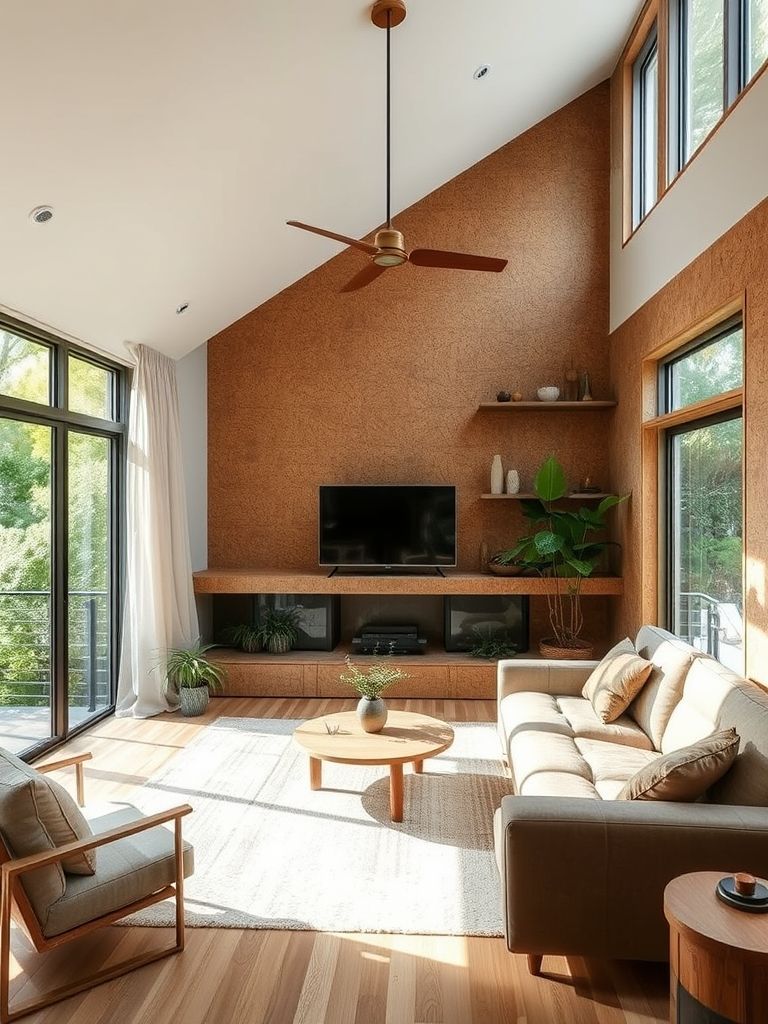
Textured Earth Tones
Stepping into this space was like stepping into nature’s warmest embrace. There were no bold colors or flashy materials—just layers and layers of texture in comforting, familiar tones. Think ochre, rust, sandstone, and olive, all coexisting like layers of a desert canyon.
The magic was in the feel. A woven wool rug beneath my feet, a suede cushion under my elbow, a clay pot with hand-thrown ridges on the mantel. Even the wall had depth—a plaster finish that caught the evening light and changed tone as the day passed.
This room didn’t need artwork to feel complete. Its textures told the story. I could see this space evolving naturally over time—adding a handmade basket here, a driftwood sculpture there—like a living organism, always grounded in the earth’s palette.
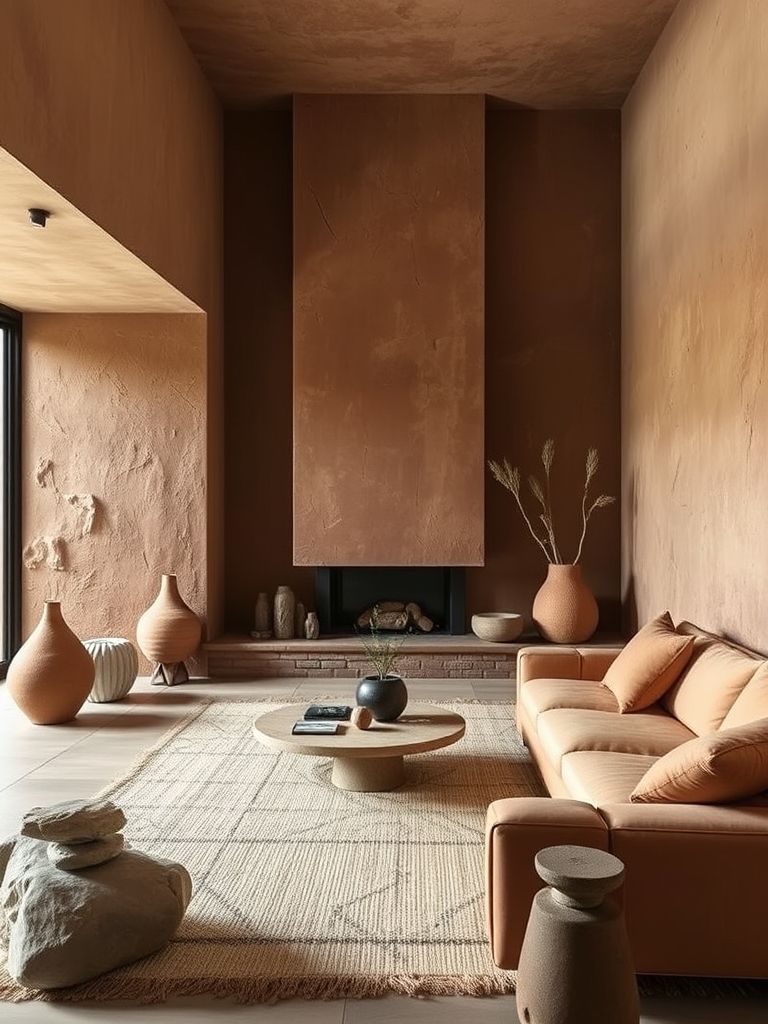
Urban Contemporary Loft
This room had city confidence. High ceilings, exposed beams, large factory-style windows—it all screamed industrial history, but the design pulled it firmly into the present.
There were polished concrete floors paired with ultra-comfy, overstuffed furniture. A navy leather sectional, metal-frame coffee table, and matte black shelving units balanced out the room’s edgy backdrop. The walls were left bare brick in one spot and smooth drywall in another, creating a visual conversation between old and new.
What I admired most was the layering of lifestyle: a reading nook tucked into a corner with a floor lamp, a compact home office nestled into a floating wall unit, and a statement art piece that felt bold without being loud. This wasn’t just an apartment; it was a declaration that city living could be smart, stylish, and comfortable all at once.
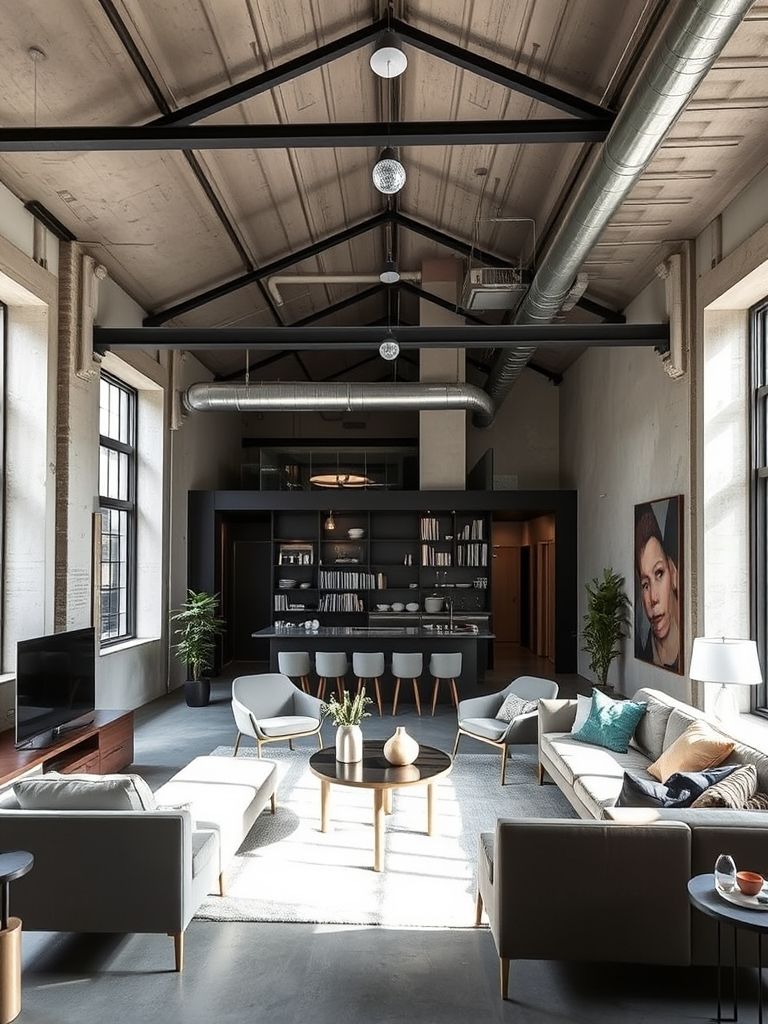
Warm Minimalism
If calm had a shape, this room would be it. Clean lines, restrained color, and negative space weren’t used to show off—they were used to create breathing room. And it worked.
The palette leaned into creamy whites, soft browns, and warm greys. Furniture was essential, not excessive. A low-profile sofa, a single armchair, a wooden bench by the window. But nothing looked empty or neglected—just edited down to what mattered.
What really warmed the space was the subtle use of light. A floor lamp with a golden shade, soft-glow LED track lights, and a large window made everything feel sun-kissed. I could picture myself here with a book and a cup of tea, grateful for every inch of stillness.
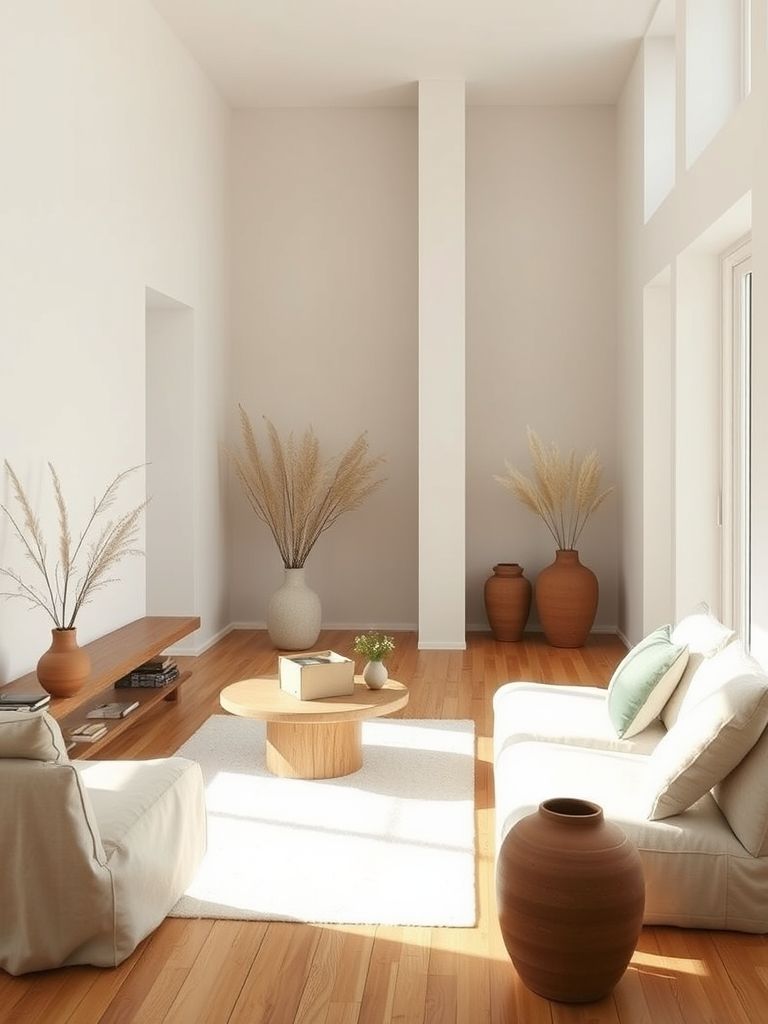
Conclusion on Contemporary Living Room
After walking through all these living rooms, one thing became clear: there’s no single formula for beauty. Some spaces speak through color, others through texture or shape. But every room above left an impression because it reflected more than trends—it reflected intention.
From futuristic pods to earthy sanctuaries, each design offered something personal. These weren’t just styled for social media—they were crafted for living, resting, gathering, and sometimes just being.
If you’re planning your own living room, think of what matters most: calm, function, personality, maybe even playfulness. Because when your living room truly fits you, it stops being just a room. It becomes your favorite part of home.



